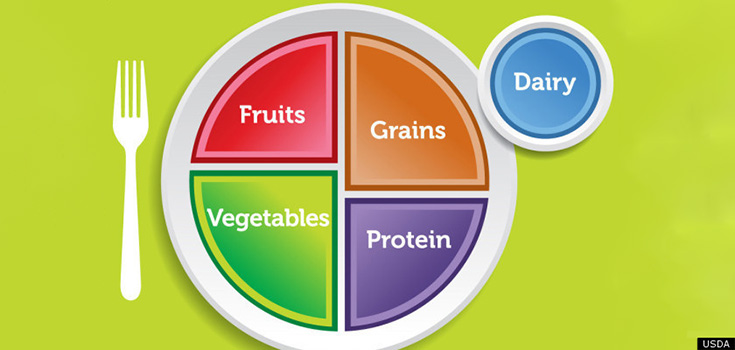New USDA Food Plate Pie Far from Average American Diet

The USDA wants us to believe they have our best interests in mind, despite evidence they are more concerned with funding or supporting Big Agriculture Big Pharma, and companies like Monsanto. One of their latest efforts in “bettering” the American diet is the revamping of the old school Food Pyramid into a new Food Plate. They say it’s easier to understand than the old pyramid, but critics say it misses the mark.
As anyone might expect, the new Food Plate looks nothing like the plates of most Americans. Most Americans consume most of their calories from grains and protein. The plate recommends your daily diet have more vegetables than anything and far less grains than the old Pyramid recommended.
The average person consumes about 50% less than the USDA recommends when it comes to fruits and dairy products. They also consume 30% fewer vegetables than the agency suggests—and the USDA’s recommendation for vegetables is relatively conservative.
Also, the USDA recommends about 2,000 calories each day for the average man. In America, that man is likely to consume about 2,500 instead – often much more with the popularity of health-destructive restaurant meals.
That additional 500 calories often comes from foods not even accounted for in the USDA plate. Alcoholic drinks, sugared beverages, desserts, oils, and junk food are a major source of fuel for many of our countrymen.
While the Plate is a simple illustration and far less complex than the pyramid, it still has work to do.
Portion sizes are not addressed in the illustration—a topic many Americans could use help with. Your stomach is about the size of your closed fist. More than likely you meals are far larger.
“You can’t fill up a platter,” said Dr. Margo Wooten of the Center for Science in the Public Interest. “People should be paying attention to the different food groups but they should also be watching their serving sizes.” Wooten recommends an 8 or 9 inch dinner plate as opposed to the far larger plates many people are accustomed to.
Making nutrition simple seems like a smart move. But it isn’t as simple as a pie chart. People need to understand their body’s connection to food and that what vegetables you choose or which protein sources you eat are as important as the percentage of your diet they represent. Organic fruits and vegetables, for instance, are better for you than conventionally grown. Also white potatoes don’t fly as a vegetable choice and things like leafy green vegetables are a far wiser choice. Simple is good. But we have to be cautious not to dumb things down too much.
Additional Sources:
